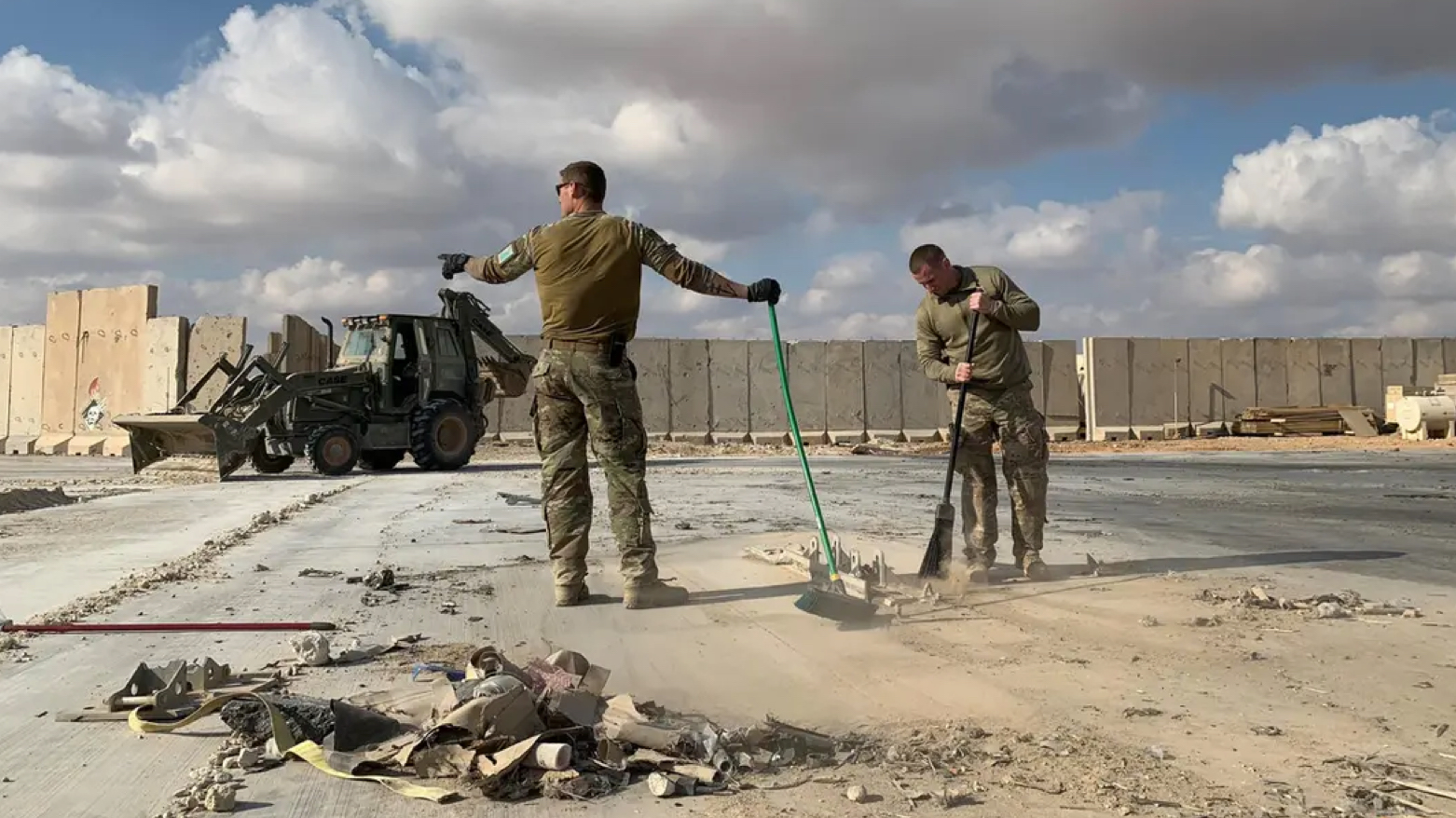Third Day of Drone, Rocket Attacks by Pro-Iranian Militias
The attacks on U.S. forces were conducted in Iraq, including the Kurdistan Region, as well as in Syria and from Yemen.

WASHINGTON DC, United States (Kurdistan 24) – Thursday marked the third successive day in which pro-Iranian militias aimed drones or rockets at U.S. forces in the Middle East. Most were shot down and casualties amounted to little more than light injuries—except for the death of one contractor who suffered a heart attack at a military base in western Iraq.
The attacks began ten days after Hamas’s Oct. 7 extraordinarily brutal assault on Israel that killed 1,400 Israelis—the most deadly day for the Jewish people since World War II, when Nazi Germany killed six million Jews.
The attacks on U.S. forces were conducted in Iraq, including the Kurdistan Region, as well as in Syria and from Yemen. They were carried out by pro-Iranian militias. Nonetheless, the Biden administration avoids the suggestion that Iran was behind them or that they represent a coordinated response to the ongoing war between Israel and Hamas.
October 17
On Tuesday, three drones were launched against two U.S. bases in Iraq. Two of the drones targeted Al-Asad Air Base in Iraq’s western province of Al Anbar.
A third drone targeted Al-Harir Air Base in the Kurdistan Region (U.S. officials also call it Bashur Air Base.)
One of the drones aimed at Al-Asad was shot down. The second was damaged, “resulting in minor injuries to Coalition Forces,” as Pentagon Press Secretary Brig. Gen. Patrick Ryder told journalists on Thursday.
The drone targeting Al-Harir was shot down, and it caused no injuries or damage, Ryder said.
Subsequently, as the Associated Press reported, the Islamic Resistance in Iraq, which it described as “an umbrella group of Iranian-backed militias,” claimed responsibility for the two attacks and said they “herald more operations” against “the American occupation.”
October 18
On Wednesday morning, two drones targeted Al-Tanf garrison in southeastern Syria. “U.S. and Coalition Forces engaged one drone, destroying it, while the other drone impacted the base resulting in minor injuries to Coalition Forces,” Ryder said.
Al-Tanf lies close to the Iraqi and Jordanian borders, and it sits astride the main highway between Baghdad and Damascus.
Thus, the Coalition presence at Al-Tanf inhibits the movement of pro-Iranian and pro-Syrian fighters, along with their weapons, from Iraq into the Syrian-Lebanese theater.
Indeed, the Saudi newspaper, Al-Sharq Al-Awsat, reported on Sunday that “the leaders of several Iraqi factions loyal to Iran have headed to Syria and Lebanon.”
They were accompanied by groups of fighters, it said, who, presumably, could support Lebanon’s Hizbollah in the event of an escalation between that group and Israel.
That same morning, as Ryder told journalists, “early warning systems indicated a possible threat approached the airbase at Al-Asad, and base personnel sheltered in place.”
It was then that the U.S. contractor suffered his fatal cardiac episode, although no attack actually occurred.
October 19
On Thursday, a somewhat different, and, perhaps, more ominous threat emerged. The Guided Missile Destroyer, the U.S.S. Carney, was “operating in the Northern Red Sea,” Ryder explained, when It “shot down three land-attack cruise missiles and several drones that were launched by Houthi forces in Yemen.”
“We cannot say for certain what these missiles and drones were targeting,” he continued, but they were “heading north along the Red Sea, potentially toward targets in Israel.”
In addition, two bases in Iraq housing U.S. forces were targeted by drones and rockets: Al-Asad air base, as well as a base near Baghdad International Airport, as Reuters reported. But, again, damage was minimal.
U.S. Position
It might well appear that these attacks are a coordinated effort, orchestrated by Iran, to support Hamas in the context of its war with Israel. That, for example, is what three analysts at The Washington Institute for Near East Policy, wrote on Tuesday, in an article entitled, “Signs of Iranian Coordination in Iraqi Base Attacks and Messaging.”
However, that is not the position of the Biden administration. It does not see coordination in the multiple attacks, nor does it see Iran’s hand.
Indeed, asked about the possibility of such coordination, Ryder responded, “I think you have to look at these individually.”
The U.S., according to Ryder, is focused on the big picture, and not these relatively small-scale attacks. “Right now, this conflict is contained between Israel and Hamas," he stated, and “our focus is on deterring a broader regional conflict.”
The danger of a possible war between Israel and Iran appears to be Ryder’s concern. So for that reason, the Biden administration downplays the significance of these attacks, as well as the possibility of an Iranian role.
But Behnam Ben Taleblu, a Senior Fellow at the Foundation for Defense of Democracies, explained to Kurdistan 24 why he believes that is the wrong approach.
“It’s a mistake to continue to disconnect the dots between patron and proxy,” Taleblu said. “The entire reason for Iran’s proxy strategy is to insulate the regime from any kinetic retaliation and hinder attribution.”
“This is the pro-Iran axis flexing its muscles,” Taleblu continued, “hoping to land a blow and avoid paying the price,” while “strategically, it might also be an effort by the regime to prevent Israel from dealing a decisive blow to Hamas or starting a conflict with Hezbollah.”